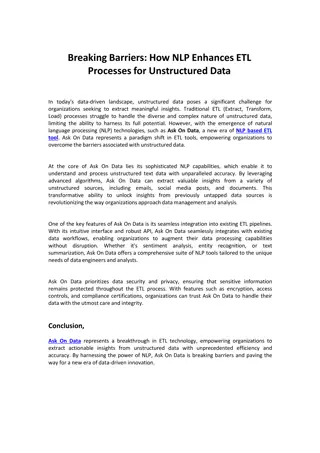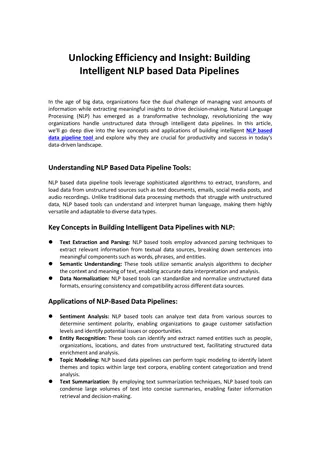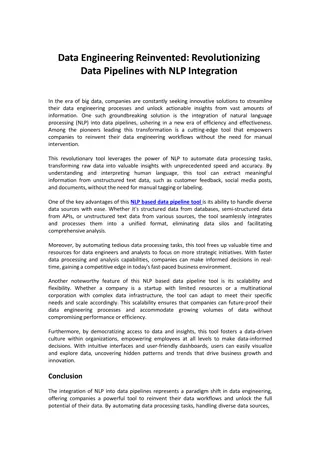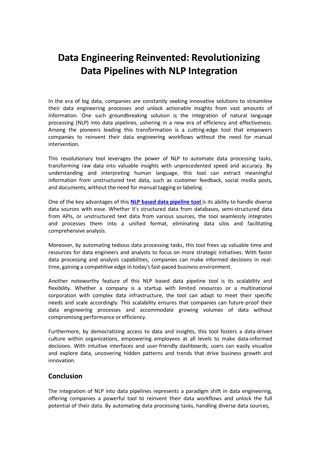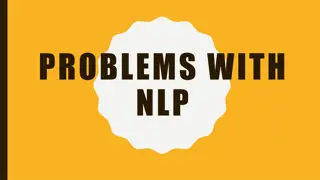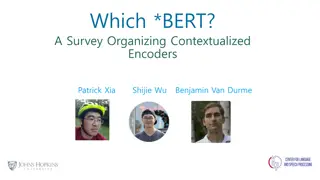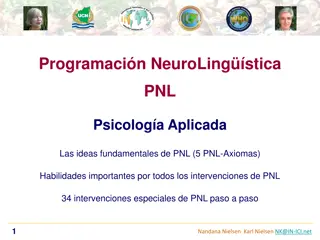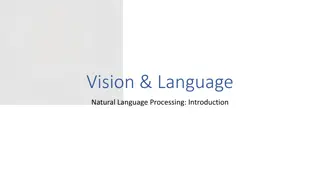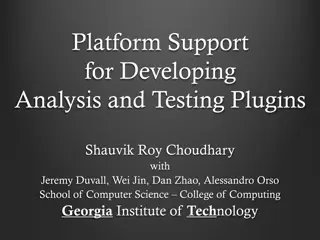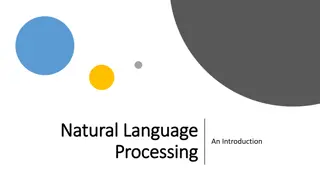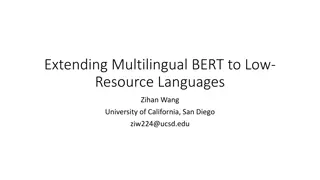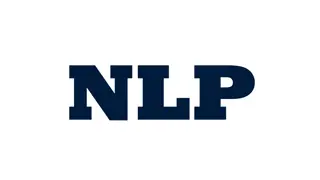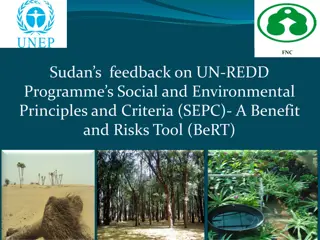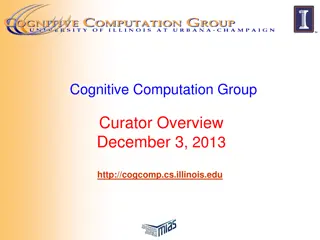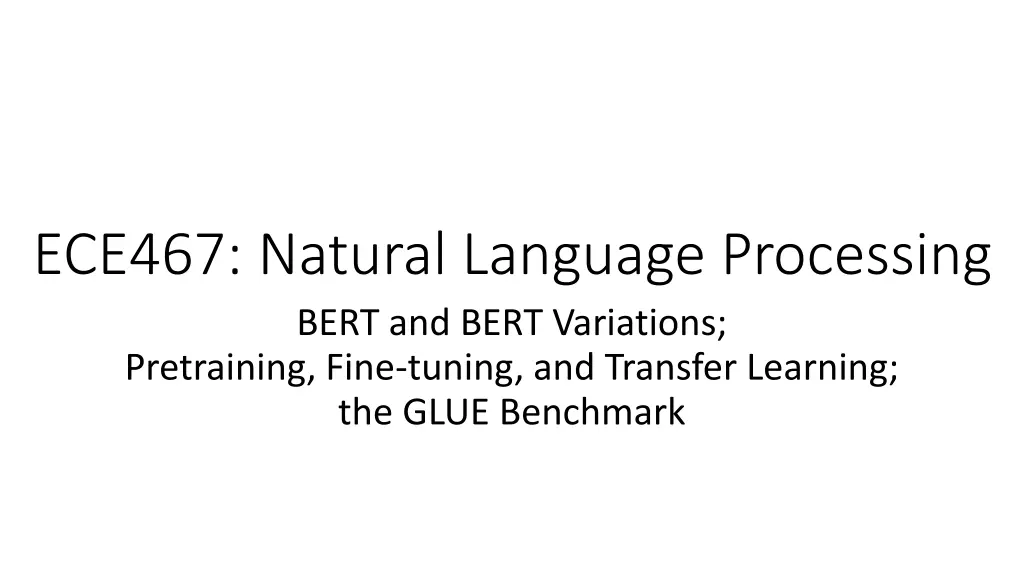
Understanding BERT and Transfer Learning in NLP
Explore BERT, a powerful Natural Language Processing system, focusing on pretraining, fine-tuning, and transfer learning. Learn about the GLUE benchmark, BERT variations, and the basics of tokenization using WordPiece tokens.
Download Presentation

Please find below an Image/Link to download the presentation.
The content on the website is provided AS IS for your information and personal use only. It may not be sold, licensed, or shared on other websites without obtaining consent from the author. If you encounter any issues during the download, it is possible that the publisher has removed the file from their server.
You are allowed to download the files provided on this website for personal or commercial use, subject to the condition that they are used lawfully. All files are the property of their respective owners.
The content on the website is provided AS IS for your information and personal use only. It may not be sold, licensed, or shared on other websites without obtaining consent from the author.
E N D
Presentation Transcript
ECE467: Natural Language Processing BERT and BERT Variations; Pretraining, Fine-tuning, and Transfer Learning; the GLUE Benchmark
If you are following the suggested readings This topic will primarily cover the system called BERT This topic is related to Chapter 11 in the textbook, titled "Mased Language Models" (of which BERT is an example) However, much of the content of my slides is based on the original BERT paper; there is a link to it from the course website Along the way, we will discuss the concepts of pretraining, fine-tuning, and transfer learning Sections 11.4 and 11.5 of the textbook are highly relevant to this aspect of BERT We will also learn about the GLUE benchmark, which was one of the major benchmarks used to evaluate BERT in the original paper At the end of the topic, we will also discuss a couple of variations of BERT that were developed later
BERT: The Basics In 2019, a year after ELMo, another system for producing contextual word embeddings was introduced at the same conference The system, created by a team of researchers at Google, is called Bidirectional Encoder Representations from Transformers (BERT) The paper introducing BERT, "BERT: Pre-training of Deep Bidirectional Transformers for Language Understanding", won the best paper award at the 2019 NAACL conference The paper is freely available online, and there is a link to it from the course website (some versions list an earlier date, when the paper was first submitted) As the name suggests, BERT is based on transformers, not LSTMs (as ELMo was), to produce contextual embeddings Note that when we covered transformers in the previous topic, we only covered them for sequence-to- sequence tasks, involving encoder-decoder networks Really, BERT uses only the encoder of a transformer (as indicated by its name), which in general can be used for sequence labelling tasks and sequence classification tasks Unlike ELMo, which produces contextual embeddings that are fed to other architectures, BERT uses one specific architecture for many NLP tasks
BERT Tokenization The original BERT implementation uses WordPiece tokens Although we didn't cover WordPiece specifically, this tokenization approach has been mentioned during a couple of earlier topics Like byte-pair encoding, the WordPiece algorithm leads to subword tokens that do not cross word boundaries When BERT is applied to sequence labeling tasks that assign a label to every word (e.g., POS tagging or NER), the system considers the prediction for the word to be the label assigned to its first subword Since BERT is a transformer-based system, position embeddings are necessary for the system to get any information that is dependent on word order We will soon see that the original BERT paper fed two sentences at a time as input during pretraining; a segment embedding indicates which sentence the corresponding token is a part of Although not explained in the original paper, according to other sources, both the position embeddings and the segment embeddings are learned as part of pre-training The final input embedding for each token is the sum of the WordPiece embedding, the position embeddings, and the segment embedding The figure on the next slide (form the original paper) helps explain the input to BERT; note that the word "playing" has been split into two WordPiece tokens in the figure
BERT Pretraining Objectives Interestingly, the developers of BERT pretrained their system for two tasks (i.e., they pretrained a single transformer encoder for two separate tasks at the same time) using unsupervised machine learning One task resembles the language modelling task that ELMo and other systems are pretrained for The creators of BERT emphasized the importance of using context from both the left and the right of words at the same time to make predictions Recall that ELMo uses a bidirectional LSTM to consider both left and right context, but separately At a high level, the first training objective used for BERT involves randomly masking some tokens, and the system tries to predict them based on their context Thus, BERT is known as a masked language model, and this training objective is known as masked language modeling We'll discuss the details of the BERT masking procedure soon The other task is next sentence prediction (NSP) The input to BERT is two concatenated sentences, with a sentence separator symbol in between For training, half of the time, the second sentence follows the first in the training corpus, and the other half of the time, the second sentence is a random sentence from the training corpus The system learns to predict whether the second sentence is the actual follow-up sentence to the first Some later works (e.g., RoBERTa) found that NSP is not important to include as a pretraining objective In the original paper, the authors claimed that including the NSP objective improved performance for some tasks, based on the results of ablation studies
BERT Masking Procedure For the masked language modeling procedure, 15% of the WordPiece tokens from the training data, chosen randomly, are masked From the original paper: "Although this allows us to obtain a bidirectional pre-trained model, a downside is that we are creating a mismatch between pre-training and fine-tuning, since the [MASK] token does not appear during fine-tuning. To mitigate this, we do not always replace masked words with the actual [MASK] token." Thus, the authors explain the following as the procedure applied to the masked tokens: 80% of the masked tokens are replaced with the token [MASK] 10% of the masked tokens are replaced with a random token 10% of the masked tokens are not changed
Pretraining BERT: The Input The figure two slides from now (from the original paper) describes the BERT architecture The left side of the figure explains the pretraining architecture The input consists of components concatenated together: A special token [CLS] The input embeddings sentence 1 (the WordPiece token embedding, the position embedding, and the segment embedding added together) A sentence separation token [SEP] The embeddings from sentence 2 (again adding three components) Although it is not apparent in the figure, samples in the appendix also show a [SEP] token after the second sentence As described on the previous slide, 15% of the WordPiece tokens are masked As described two slides back, 50% of the time, sentence 2 follows sentence 1 in the training corpus, and the other 50% of the time, sentence 2 is randomly selected from the training corpus The appendix also explains that the "sentences" are actually more general spans of text, chosen such that the input sequence never exceeds 512 tokens Although the paper doesn't state it, if the input sequence is shorter than 512 tokens, it must be padded (since all transformer-based architectures accept fix-sized input)
Pretraining BERT: The Process The training corpus for BERT consists of BookCorpus and English Wikipedia BookCorpus is a corpus of self-published books, containing a total of about 800 million words The authors stripped non-text from the Wikipedia articles, leaving them with about 2.5 billion words Input sequences were generated as described on the previous slide Loss functions were computed based on the following predictions: The final hidden state corresponding to the [CLS] token (labeled "C" in the figure on the next slide) is considered the "aggregate sequence representation for classification tasks" During pretraining, this is used for the NSP training objective Final hidden states corresponding to masked tokens were used for the masked language modeling task (i.e., the system would predict the original token) The paper describes two BERT systems that they call BERTBASEand BERTLARGE BERTBASEcontains 12 transformer encoder layers, vectors of size 768, and 12 self-attention heads BERTLARGEcontains 24 transformer encoder layers, vectors of size 1024, and 24 self-attention heads The BERTBASEand BERTLARGEsystems had about 110 million and 340 million trainable parameters, respectively The paper says that the specifications of BERTBASEwere chosen to be comparable to the original GPT model Other hyperparameters such as batch size, learning rate, epochs, etc. are described in the paper
Fine-Tuning BERT: Transfer Learning Basics Unlike ELMo, the purpose of BERT is not to produce contextual embeddings that can be fed into other architectures Rather, the same architecture that has been used for pretraining (generally with an extra layer for task-specific classification) can be fine-tuned for other tasks This is an example of transfer learning The premise of transfer learning is that information learned for one task can also be useful for other related tasks Technically, the use of static word embeddings, such as those learned by word2vec, for tasks other than which they were trained for, probably fits the definition of transfer learning However, I more often see the term transfer learning used when the model being used either stays the same or is slightly modified Transfer learning is often used in modern computer vision (I'll briefly talk about this in class) The right side of the figure on the previous slide helps to explain how BERT can be fine-tuned for other tasks (we'll discuss this is more detail on the next slide)
Fine-Tuning BERT for Specific NLP Tasks The right-side of the figure two-slides back shows SQuAD at the front Recall that SQuAD is really a reading-comprehension dataset, and the way the task is usually tackled is as a sequence labeling task applied to the appropriate passage Instead of feeding the system sentence 1 and sentence 2, the system is fed the question and the corresponding passage or paragraph that contains (or might contain) the answer The final hidden states corresponding the passage tokens are fed to two softmax layers One predicts the probability that each token is the start of the answer The other predicts the probability that each token is the end of the answer For SQuAD 2.0, the system treats answers to unanswerable questions as starting and ending at the [CLS] token For sequence labeling tasks that do not involve sentence pairs (e.g., POS tagging and NER), the second sentence is left out For sequence classification tasks, only the final decoder hidden state corresponding to the [CLS] token is used fed to a softmax to predict a label Note that, unlike ELMo, the parameters learned during pretraining are not frozen; in other words, during fine-tuning, all BERT parameters are adjusted The article points out that "compared to pre-training, fine-tuning is relatively inexpensive"; this is an important point (more details about this are in the paper, and I'll discuss it a bit in class)
BERT Experiments The BERT article describes the results of fine-tuning BERT for 11 tasks The datasets used for these tasks include those from the GLUE benchmark (datasets for 8 different tasks are used), SQuAD (versions 1.1 and 2.0), and SWAG We have already discussed the two versions of SQuAD when we covered QA and ELMo The Situations With Adversarial Generations (SWAG) dataset "contains 113k sentence-pair completion examples that evaluate grounded commonsense inference" From the original BERT article, the task associated with this dataset can be described as: "Given a sentence, the task is to choose the most plausible continuation among four choices" For this dataset, the authors constructed four input sequences, each containing the same starting sentence and one of the possibly completions They constructed a prediction head stemming from the C vector (corresponding to the [CLS] token) that predicts probabilities of each of the four possible completions Therefore, this task is treated a bit differently from all the others, and they don't go in to too much detail The GLUE benchmark is a collection of datasets related to tasks that seem to rely on natural language understanding; we will discuss this in more detail shortly
The GLUE Benchmark: General The BERT paper describes the General Language Understanding Evaluation (GLUE) Benchmark as "a collection of diverse natural language understanding tasks" The purpose of GLUE was to create datasets for tasks that seem to require understanding, at least when humans solve them There are actually nine datasets that comprise the GLUE Benchmark One of the nine datasets, called Winograd Natural Language Entailment (WNLI), has been left out of the BERT paper This is another NLI dataset created by Winograd Schemas According to a paper describing GLUE, the sentence pairs are based on Winograd Schemas, where the pronoun in question is replaced by the two possible referents The task is to predict whether the sentence with the pronoun repeated is entailed by the original sentence The BERT paper states that there were "issues with the construction of this dataset", and this is backed up by the GLUE paper and an FAQ on the GLUE website The BERT submission was able to beat every previous submission by picking the larger category, no entailment, which accounts for 65% of the test examples The other eight datasets are described on the next two slides
The GLUE Benchmark: Datasets 1 - 4 Multi-Genre Natural Language Inference (MNLI) This is a textual entailment dataset The task is to with predict whether a second sentence is entailed by, contradicts, or is neutral with respect to the first We briefly mentions this sort of task when we discussed ELMo Quora Question Pairs (QQP) The input is two questions form Quora The system predicts whether the two questions are semantically equivalent Question Natural Language Inference (QNLI) This dataset converts examples from SQuAD to binary classification tasks The input is a question / sentence pair The system predicts whether the sentence contains the answer to the question The Stanford Sentiment Treebank (SST-2) The input is a sentence extracted from a movie review The system predicts whether the sentiment of the sentence is positive or negative (this is a binary classification task)
The GLUE Benchmark: Datasets 5 - 8 The Corpus of Linguistic Acceptability (COLA) The input is a single sentence The system predicts whether it is linguistically acceptable (this is a binary classification task) The Semantic Textual Similarity Benchmark (STS-B) The input is a pair of sentences extracted from news headlines and other sources (e.g., video and image captions, according to a paper describing GLUE) The task is to predict their similarity, on a scale from 1 to 5 The Microsoft Research Paraphrase Corpus (MRPC) The input is a pair of sentences extracted form online news sources The task is to predict whether the two sentences are semantically equivalent (this is a binary classification task) Recognizing Textual Entailment (RTE) This is another textual entailment dataset The BERT paper describes this as being "similar to MNLI", but unlike MNLI, it is a binary task (the categories of contradiction and neutral are combined to "not entailed", according to a paper describing GLUE) The BERT paper says that, relative to MNLI, this dataset contains much less training data
BERT Results and Evaluation The tables on the next two slides (all from the original BERT paper) show the reported results of BERT for the 11 tasks previously described The top left figure on the next slide shows the results for SQuAD 1.1 The middle figure on the next slide shows the results for SQuAD 2.0 The right figure on the next slide shows the results for SWAG The figure two slides from now shows the results for eight GLUE tasks For all 11 of these tasks, BERT achieved state-of-the-art results For some of these tasks, there was significant improvement over the previous state-of-the-art Remember that this was achieved with a single common architecture BERT, based on a transformer encoder, is pretrained using unlabeled data for masked language modeling and, in the original paper, for next sentence prediction The same architecture (slightly modified at the top depending on the task) is then fine-tuned using smaller training set
RoBERTa After BERT, many similar, even higher-performing systems have been developed One, produced by researchers at the University of Washington and Facebook, is called RoBERTa The system was introduced in a paper titled, "RoBERTa: A Robustly Optimized BERT Pretraining Approach", released in 2019 (just months after the BERT paper was presented) RoBERTa uses primarily the same architecture as BERT, but it is pretrained differently; the main differences are: It uses about ten times as much pretraining data It uses larger mini-batches Every few epochs, it randomly regenerates the masked tokens It trains for more epochs It does not use next sentence prediction as a pretraining objective (it only uses the masked language modeling objective) RoBERTa was evaluated using the SQuAD and GLUE tasks (as was BERT), plus an additional reading comprehension task known as RACE (the paper does not report results for SWAG) RoBERTa beat the original BERT on all tasks for which both were tested, and it achieved new state- of-the-art results for most of tasks on which it was tested
SpanBERT Another variant of BERT is SpanBERT, developed by collaborators from the University of Washington, Princeton, the Allen Institute of AI, and Facebook The system was introduced in a paper titled, "SpanBERT: Improving Pre-training by Representing and Predicting Spans", also first released in 2019, and published in a 2020 journal The big difference between SpanBERT and BERT is that SpanBERT masks out spans of text, as opposed to individual tokens The pretraining task is to predict the masked spans, based on the context Unlike RoBERTa, the SpanBERT developers used the same pretraining dataset as BERT Like RoBERTa, they did not use next sentence prediction as an additional training objective SpanBERT was evaluated using SQuAD, additional QA tasks, GLUE, a coreference resolution task, and a relation extraction task BERT was ultimately tested on all of these, even if results were not in the original BERT paper The relation extraction tasks was to predict how two spans of text within a sentence relate to each other (there were 42 possible categories, including "no relation") SpanBERT achieved better results than BERT on 14 out of 17 tasks; it performed about the same on two; and slightly worse on one

